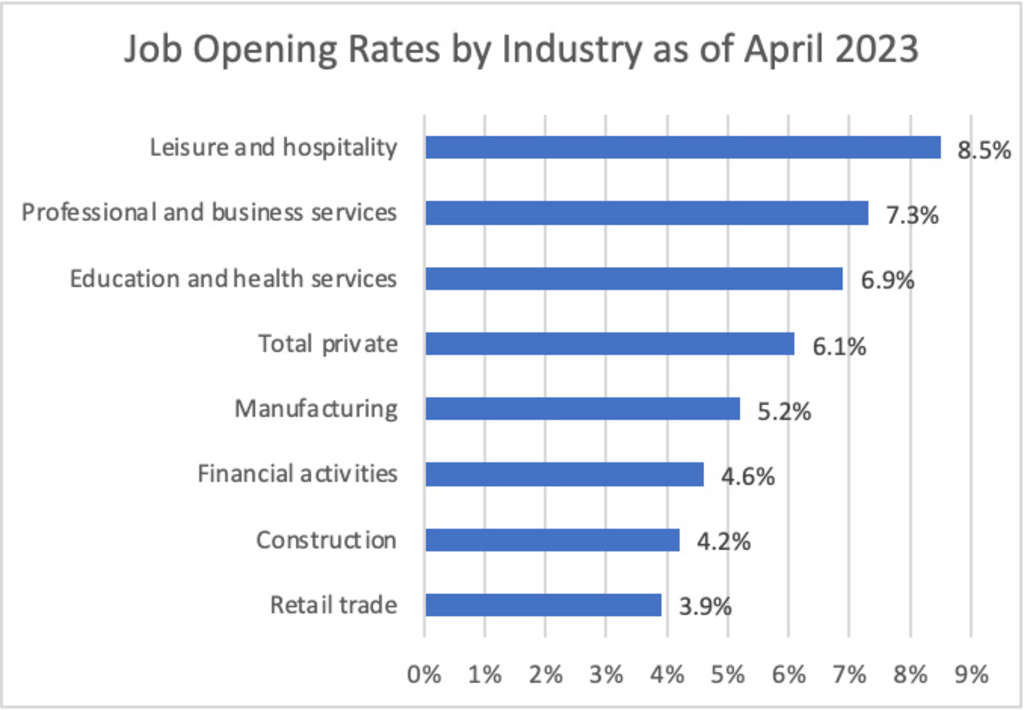Redefining the Workforce Landscape: Evolving Patterns in Employment
As of April, the total number of job openings remain elevated at more than 10 million—nearly twice the number of available workers. While the job openings have fallen since their peak at more than 12 million in March 2022, there are still three million more openings than the month before the pandemic began.
As of April, the total number of job openings remain elevated at more than 10 million—nearly twice the number of available workers. While the job openings have fallen since their peak at more than 12 million in March 2022, there are still three million more openings than the month before the pandemic began.
- The problem: While demand has returned, labor supply challenges continue, which is resulting in gaps in the travel workforce that have forced many travel businesses to reduce their hours.
Industry comparison: Despite the fact that total job openings are slowing in many industries and the economy overall, leisure and hospitality has averaged 1.5 million job openings since the start of the year—resulting in the highest job opening rate across industries.
Go deeper: The sectors continuing to add jobs include transportation, healthcare and leisure and hospitality while finance, information and manufacturing jobs are declining.
What else: The overall labor force participation rate (62.6%) is still below pre-pandemic levels of 63.3%, largely due to the aging population.
- Despite the fact that many Americans left the workforce, whether permanently or temporarily during the pandemic, the share of prime-age workers—those between 25 and 54—is now higher than it was before the pandemic and at the highest level since January 2007. Further, the number of women in the workforce was higher than pre-pandemic levels for the first time in February 2023.
Still, with many more Americans aging out of the workforce than entering it and declining fertility rates, immigrants are playing an increasingly crucial role in the labor market. Even if the job market cools down somewhat, it likely will mean ‘forever’ labor shortages.
The industry has work to do to restore our industry’s workforce. Travel organizations are not able to hire the workers they need to meet demand and provide the desired level of service. Lack of access to additional temporary workers as a result of visa processing delays, backlogs, availability of H-2B visas and other travel restrictions make matters worse.
Our efforts: U.S. Travel has actively led efforts to expand travel businesses’ access to temporary and seasonal worker visas for jobs that are difficult to fill. Demand for H-2B visas regularly exceeds 200,000 requested positions for only 66,000 available visas. As a result, employers are forced into a lottery where luck dictates their ability to obtain workers more than need. In order to create greater predictability and reliability in the H-2B program, U.S. Travel is pursuing changes that would lift the cap or exempt some visa holders from counting against the cap. This would effectively expand the opportunity to hire international workers.

